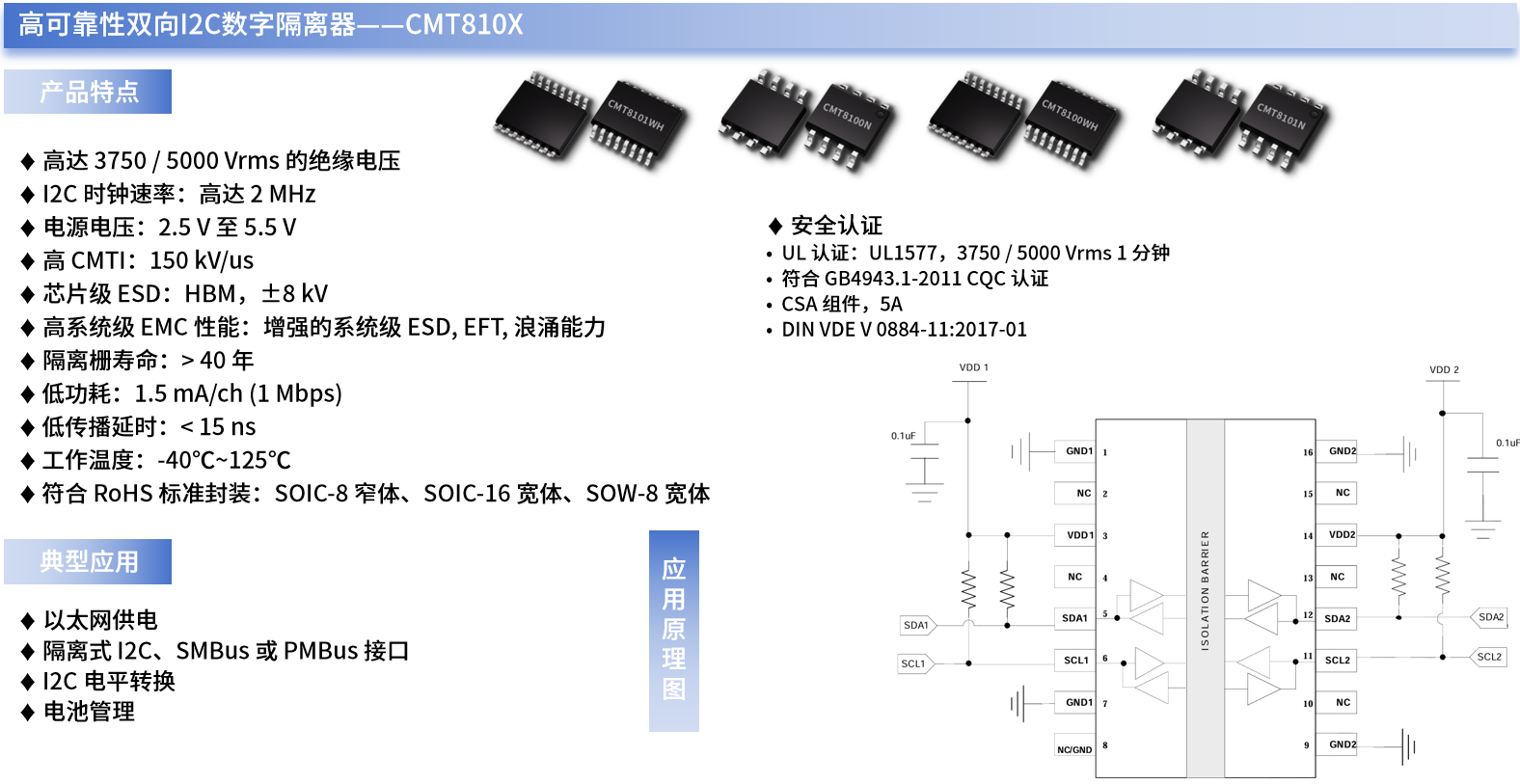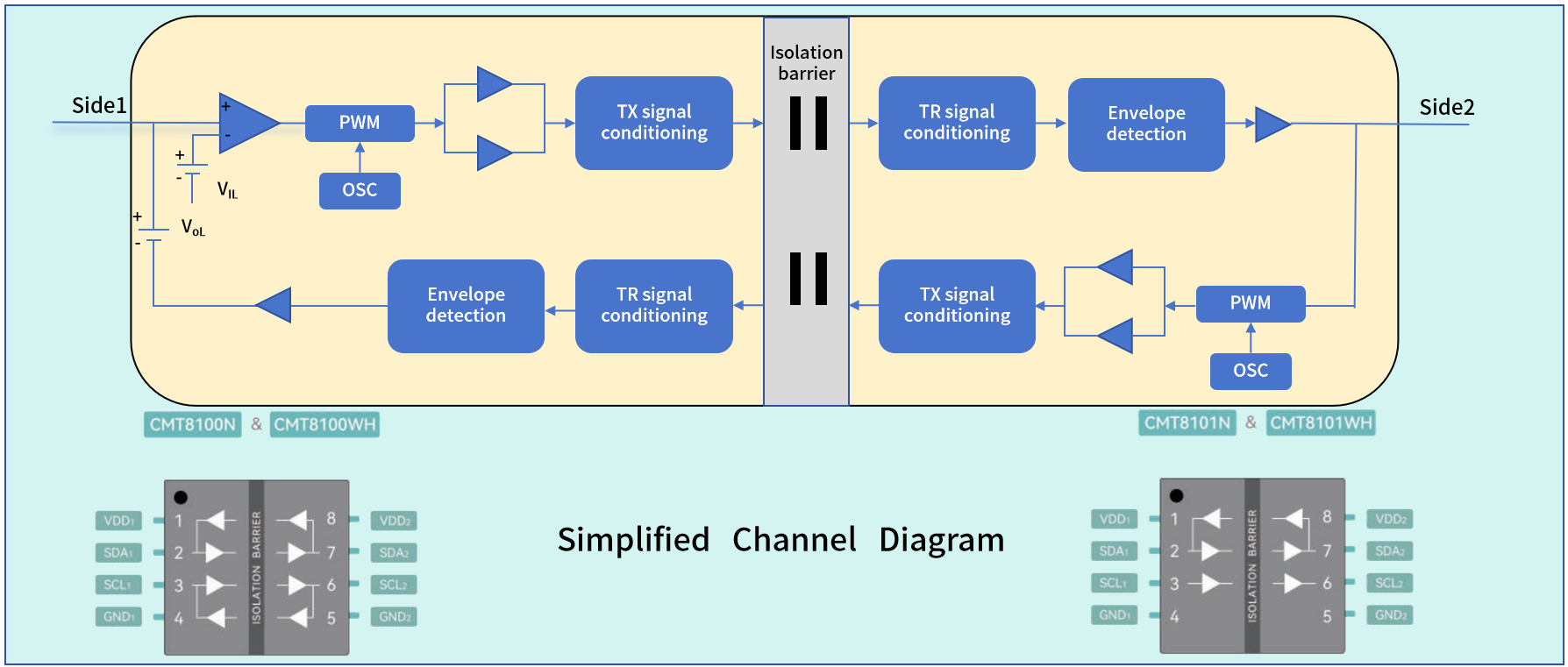HOT Search
Hot News
Bidirectional two-wire I2C synchronous serial bus requires only two wires (data line SDA, clock line SCL) can be in a host and multiple slaves (one master and multiple slaves) or multiple hosts and multiple slaves (multiple masters and multiple slaves) to carry out fast and reliable data interaction between the interconnection of multiple devices to achieve a variety of data transmission, with simple circuit design, cost control and easy to implement, etc. Advantages, have been With the advantages of simple circuit design, cost control and easy realization, it has been widely used in short-distance communication occasions between ICs within or between boards.

I2C bus structure diagram
Usually, in the on-board circuit using I2C bus communication, each functional IC generally shares the same power supply system and the alignment distance is very short, so the ground potential difference is very small, and there is no inter-board communication common ground loop and noise interference and other problems, and there is no need to carry out electrical isolation.
However, both intra-board and inter-board circuits, when the I2C bus to communicate with the nodes fall in different levels of voltage domain, it is necessary to add electrical isolation measures to isolate the I2C host from one or more slaves, in order to enhance the bus's ability to resist interference, to solve the problem of noise, grounding and safety, and at the same time to meet the industry's safety requirements.
For example, in some complex system functions, the existence of different voltage domains, the need for a number of independent modules in the embedded system, the main control processor needs to real-time and the system's sensors, EEPROM memories and drives, and other independent modules for I2C inter-board communication.
After taking electrical isolation measures between the main control processor and independent modules, not only can it isolate the noise conduction path generated during the switching process of external power devices and improve the sampling accuracy of the sensors, but also eliminate the ground loop caused by the ground loop current, enhance the fault-tolerant capability of the system, and realize the hot-plugging of circuits, thus significantly enhancing the integrity of the data transmission and the system operation safety under the scenario of the collaborative work of multiple modules.
In addition, in the on-board communication system using the I2C bus, the sensor in the acquisition of temperature, current and other weak signals, if there is a high-precision ADC/DAC converter, in order to avoid the power supply crosstalk and microprocessor noise on the high-precision analog circuits to produce interference, but also need to be taken between the microprocessor and the high-precision ADC/DAC converter electrical isolation measures, in order to avoid the impact on the system's measurement accuracy. CMT810X
As an IC device dedicated to isolate I2C bus communication, the core value of I2C digital isolator is to realize electrical isolation between two electrical systems, block the direct current path between them, and ensure the normal transmission of I2C communication signals (clock SCL and data SDA) under the premise of ensuring the compatibility of I2C protocol and signal integrity.
For example, CMT810x independently developed by HOPERF is a series of highly reliable bi-directional I2C digital isolators based on capacitive barrier technology, as shown in the figure below, they have a simple peripheral circuit, only need to be powered by a double-ended power supply and connected to a pull-up resistor in the I2C communication pin to meet the open-drain drive of the chip can be realized to the isolation of the I2C bus.

CMT810x series I2C digital isolator for compliance with AEC-Q100 standards, UL1577 safety regulations, to support a variety of electrical isolation voltage (3.75 kVrms, 5 kVrms); at the same time in the low-power conditions to provide a high degree of electromagnetic immunity and low radiation performance.
The CMT810X series of I2C digital isolators feature I2C clocks up to 2 MHz and common-mode transient immunity (CMTI) up to 150 kV/us. The wide supply voltage of the CMT810X series devices supports direct connection to most digital interfaces for smooth level shifting. Their high system-level EMC performance also enhances device reliability and stability.
The I2C interface inside the CMT810X family of devices is split into two unidirectional channels, each communicating in opposite directions through a dedicated capacitively isolated channel. The digital signal is modulated by an RF carrier generated by an internal oscillator on the transmitter side, which is then transmitted through the capacitive isolation barrier and demodulated on the receiver side.

As shown above, the CMT8100N/WH is a highly reliable two-channel bidirectional isolator for clock and data lines; the CMT8101N/WH is an isolator with bidirectional data and unidirectional clock channels. The CMT8100N/WH is suitable for multi-host applications, while the CMT8101N/WH is suitable for single-host applications.
The Side2 logic level of the CMT810X series devices is a standard I2C value with a maximum load of ≤400pF on both sides; therefore, multiple CMT810X devices connected to the bus via the Side2 pin can communicate with each other as well as with other I2C-compatible devices.
The Side1 logic level of the CMT810X family of devices is not an I2C standard value. the output low level of the CMT810X is 650mV, and the threshold from the low level output voltage to the high level input voltage is 50mV, which prevents the output logic low level of Side1 from being transmitted back to Side2 and pulling down the I2C bus.
Looking ahead, with the rapid development of industrial communication and Internet of Things industry, I2C digital isolator, as one of the important components to ensure the quality of I2C bus communication and its safe operation, will continue to evolve in the direction of higher integration, higher reliability and better performance, and usher in a broader development space.